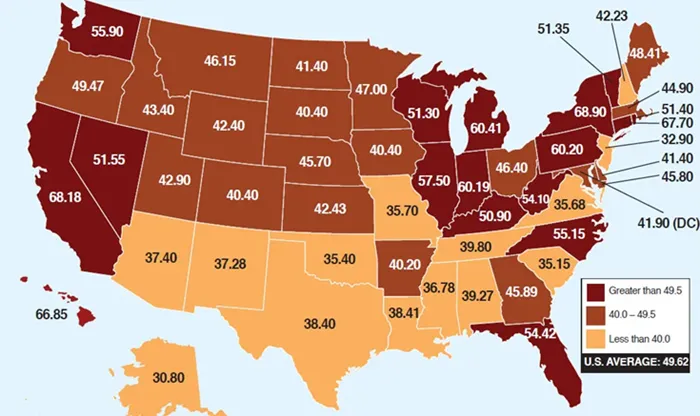Gasoline prices are a significant concern for many Americans, influencing daily commutes, travel plans, and household budgets. As of March 2025, the national average price of gasoline stands at $3.11 per gallon, reflecting a slight decrease from the previous month’s average of $3.12.
Factors Influencing Gasoline Prices
Gasoline prices are influenced by a multitude of factors, including:
Crude Oil Prices: The cost of crude oil, which constitutes a substantial portion of gasoline prices, is affected by global supply and demand dynamics, geopolitical events, and production levels set by major oil-producing nations.
Refining Costs and Profits: The process of refining crude oil into gasoline involves operational costs and profit margins, which can vary based on refinery maintenance schedules, technological advancements, and regulatory requirements.
Distribution and Marketing Costs: Expenses related to transporting gasoline from refineries to distribution points, as well as marketing and retailing costs, contribute to the final price at the pump.
Taxes: Federal, state, and local taxes are imposed on gasoline, varying by jurisdiction and significantly impacting the overall price paid by consumers.
Regional Variations in Gasoline Prices
Gasoline prices exhibit notable regional variations across the United States due to differences in taxes, transportation costs, and local market conditions. For instance, in February 2025, the average price for regular motor gasoline was:
West Coast: $4.08 per gallon
Central Atlantic: $3.17 per gallon
Rocky Mountain: $3.01 per gallon
New England: $3.00 per gallon
Midwest: $2.96 per gallon
Lower Atlantic: $2.94 per gallon
Gulf Coast: $2.71 per gallon
These variations are primarily attributed to differences in state taxes, proximity to oil refineries, and regional supply and demand factors.
Historical Trends and Future Outlook
Over the past decade, gasoline prices have experienced significant fluctuations, influenced by factors such as economic cycles, geopolitical events, and changes in energy policies.
Looking ahead, forecasts suggest a continuation of the recent trend toward lower gasoline prices. According to GasBuddy’s 2025 Fuel Price Outlook, the national average price of gasoline is projected to decline to $3.22 per gallon, down from $3.33 in 2024.
This anticipated decrease is attributed to several factors, including:
Increased Domestic Oil Production: The United States has seen a rise in domestic oil production, reducing reliance on foreign oil imports and enhancing energy security.
Moderating Global Demand: Slower economic growth in key global markets may lead to a stabilization or reduction in oil demand, exerting downward pressure on prices.
Expansion of Refining Capacity: Investments in refining infrastructure are expected to improve supply efficiency, potentially leading to lower gasoline prices.
Impact of Tariffs and Trade Policies
Trade policies and tariffs can have significant implications for gasoline prices. Recent tariffs imposed on goods from Mexico, Canada, and China are anticipated to drive up prices for various energy products, including gasoline. These tariffs may affect the cost of imported oil and gasoline, leading to price increases at the pump.
Strategies for Consumers to Manage Fuel Expenses
Given the volatility of gasoline prices, consumers can adopt several strategies to manage fuel expenses:
Maintain Vehicle Efficiency: Regular vehicle maintenance, such as timely oil changes and tire pressure checks, can improve fuel efficiency.
Adopt Fuel-Saving Driving Habits: Practices such as smooth acceleration, maintaining consistent speeds, and minimizing idling can reduce fuel consumption.
Utilize Fuel Price Tracking Tools: Leveraging apps and websites that track and compare fuel prices across different stations can help identify the most cost-effective fueling options.
Consider Alternative Transportation: Exploring options such as carpooling, public transportation, or transitioning to electric vehicles can reduce dependence on gasoline.
Conclusion
The national average price of gasoline is influenced by a complex interplay of factors, including crude oil prices, refining and distribution costs, taxes, and regional market dynamics. While recent trends indicate a potential decline in gasoline prices, consumers should remain mindful of the various elements that contribute to price fluctuations.
By staying informed and adopting fuel-efficient practices, individuals can better navigate the complexities of gasoline pricing and make more economical choices at the pump.
Related Topics:

